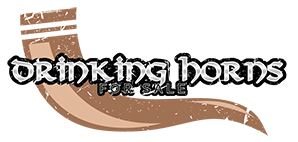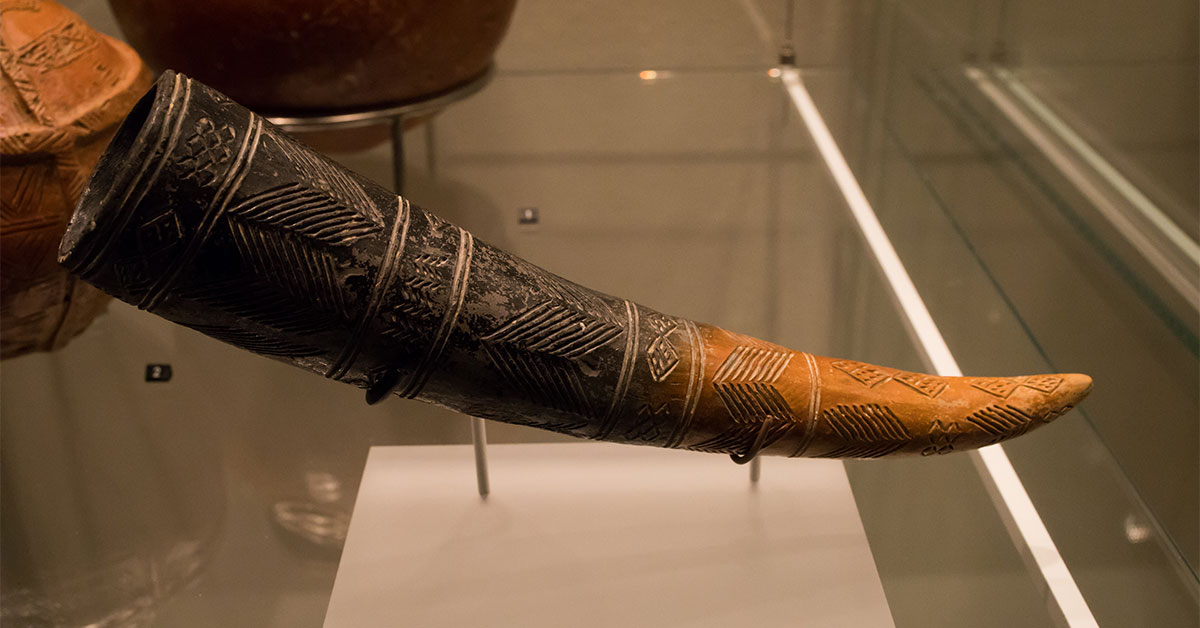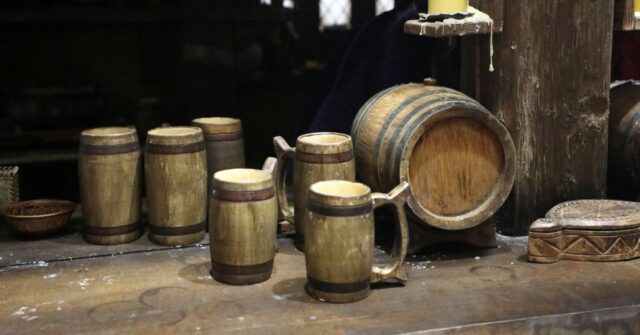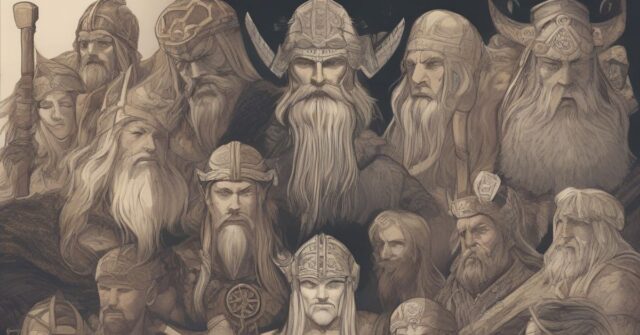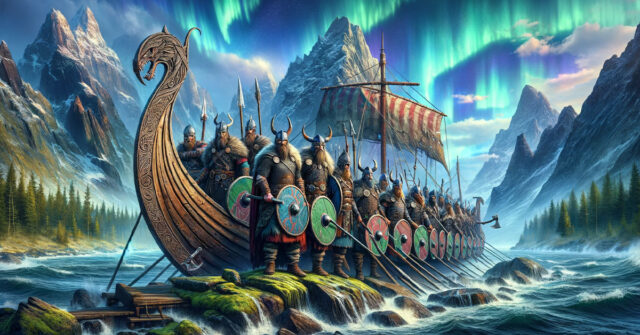Exploring the rich and diverse history of drinking horns takes us from the realm of myths and legends to the present day.
These iconic vessels, more than just tools for drinking, are steeped in cultural, historical, and artistic significance. This journey uncovers their origins, evolution, and enduring allure in modern times.
The Origins of Drinking Horns
Drinking horns have been a part of human history for millennia, originating in an era where every part of an animal was utilized.
Their initial use was likely born out of necessity but swiftly grew to embody cultural and ceremonial importance across various civilizations.
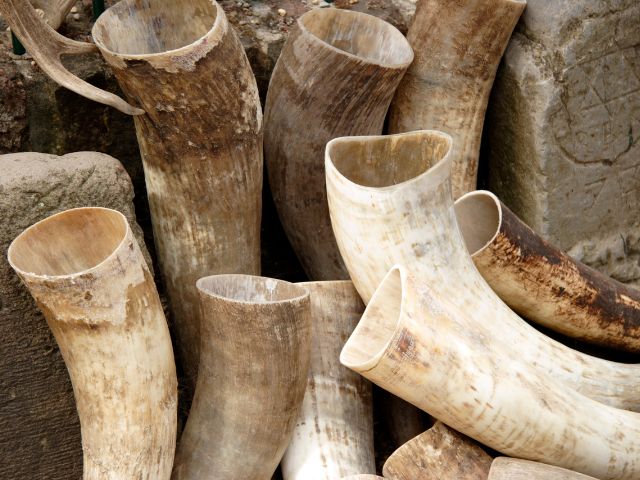
Ancient Beginnings: The First Drinking Horns
Historical evidence suggests that the earliest drinking horns date back to the Neolithic period.
Made from bovine horns, these ancient vessels were used across different continents, from Europe to Africa, serving not only as drinking tools but also as symbols of power and prestige.
Mythical Significance: Legends and Lore
In mythology, drinking horns held a special place, often associated with gods and heroes. From the Norse mead of poetry to the cornucopia of Greek mythology, these horns transcended their practical use, symbolizing abundance, strength, and divine power.
Cultural Significance Through the Ages
As time progressed, drinking horns maintained their significance but adapted to the cultural and social contexts of different eras and regions.
They became emblematic of various traditions and rituals, reflecting the values and beliefs of the people who used them.
Vikings and Norse Culture
In Norse culture, the drinking horn was not just a vessel for beverages but a symbol of warrior culture and camaraderie.
Used in feasts and ceremonies, these horns were often intricately decorated and passed down as heirlooms, embodying the Viking spirit and heritage.
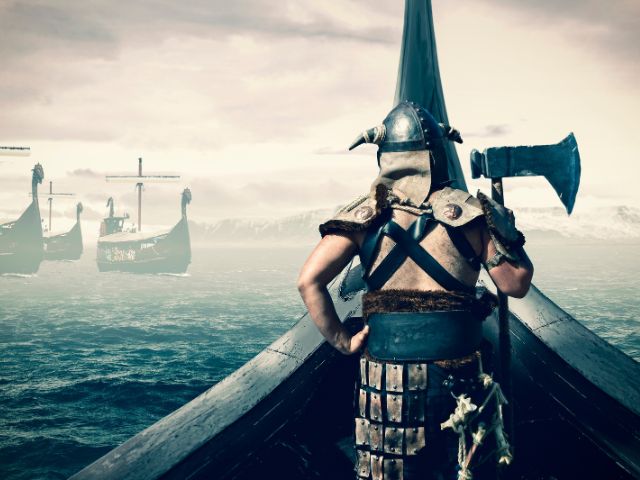
Medieval Europe: Status and Ceremony
In Medieval Europe, drinking horns evolved to become status symbols. They were often adorned with precious metals and gemstones, reflecting the wealth and standing of their owners.
Kings, nobles, and knights used these ornate horns in ceremonies and feasts, underlining their social and political stature.
Global Variations: Africa, Asia, and Beyond
Across Africa and Asia, drinking horns also held cultural significance.
In Ethiopian and Eritrean cultures, for example, they were used in religious and social events, often elaborately decorated and cherished as part of their cultural heritage.
Artistry and Craftsmanship
The creation of drinking horns is an art form that reflects the skills and traditions of the craftsmen.
From selecting the right horn to carving and decorating, each step requires precision and creativity, resulting in unique and beautiful pieces.
Materials and Methods: From Past to Present
Traditional methods of making drinking horns involved hollowing out and curing the horn, then often lining it with pitch.
Modern craftsmen may also use resins and other materials to ensure the horn is safe and durable for contemporary use.
Iconic Designs and Decorations
Decorations on drinking horns range from simple carvings to elaborate inlays of silver, gold, and precious stones.
These designs often carry symbolic meanings, tell stories, or depict scenes from mythology, adding a layer of depth and allure to each piece.
Notable Artisans and Their Legacy
Throughout history, certain artisans have gained fame for their exceptional work in crafting drinking horns.
Their legacy lives on through their techniques and styles, which continue to inspire modern horn makers.
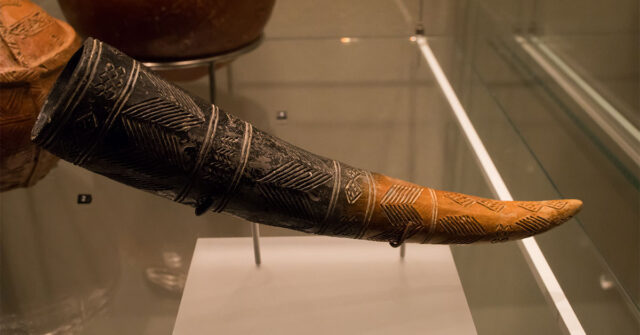
Drinking Horns in Modern Times
Today, drinking horns have seen a resurgence in popularity, thanks partly to their portrayal in popular media.
They are embraced not only by historical enthusiasts but also by those who appreciate their unique aesthetic and cultural significance.
Revival in Popular Culture
Popular films, TV shows, and books have played a significant role in the modern revival of drinking horns, often associated with fantasy, historical dramas, and Viking culture.
This resurgence has sparked a renewed interest in their history and use.
Contemporary Uses and Significance
In the modern era, drinking horns are not just historical relics but are used in various cultural events, renaissance fairs, and even in everyday life by enthusiasts. Their appeal lies in their connection to history and tradition, offering a unique way to experience and honor the past.
Choosing and Caring for Your Drinking Horn
For those interested in owning a drinking horn, understanding how to select and care for these unique items is crucial. This section offers practical advice for potential buyers and owners, ensuring the longevity and quality of their horns.
Types of Drinking Horns Available Today
Today’s market offers a range of drinking horns, from historically accurate replicas to modern interpretations. Choices vary in size, material, and decoration, catering to different tastes and preferences.
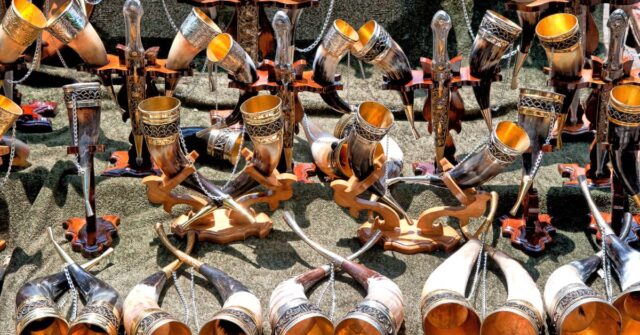
Maintenance and Preservation Tips
Proper care of a drinking horn is essential for its preservation. This includes regular cleaning, avoiding prolonged exposure to liquids, and using suitable cleaning agents to maintain its condition and appearance.
Purchasing Guide: Quality, Authenticity, and Aesthetics
When purchasing a drinking horn, consider factors like authenticity, craftsmanship, and aesthetics. It’s essential to buy from reputable sources to ensure the quality and authenticity of the horn.
Drinking Horns in Ceremonies and Events
Drinking horns continue to play a role in various ceremonies and events, serving as a bridge between the past and present in these cultural practices.
Traditional and Modern Ceremonies
In both traditional and modern ceremonies, drinking horns can be symbols of unity, celebration, and respect for heritage. They are used in weddings, pagan rituals, and cultural festivals, each time imbuing the event with historical significance.
Drinking Horns in Weddings and Festivals
At weddings and festivals, drinking horns often play a ceremonial role, used in toasts and as part of the festivities. They add an element of tradition and uniqueness to these celebrations.

Legal and Ethical Considerations
As with any product made from animal materials, there are legal and ethical considerations to be aware of when buying and using drinking horns.
Sourcing Materials: Ethics and Sustainability
Responsible sourcing of horn materials is crucial. Ethical makers ensure that their materials are sourced sustainably and humanely, often using horns that are byproducts of other industries.
Regulations and Restrictions in Different Regions
Different countries have regulations regarding the import and sale of animal products. It’s important to be aware of these regulations to ensure that your purchase and use of drinking horns are legal and ethical.
Conclusion: The Lasting Legacy of Drinking Horns
The journey of the drinking horn from its mythical origins to its modern-day incarnations is a testament to its enduring appeal and significance. As both a historical artifact and a contemporary cultural symbol, the drinking horn continues to fascinate and inspire.
The Evolving Role of Drinking Horns in Society
Drinking horns have evolved from practical tools to ceremonial objects, reflecting the changing times and cultures. Their continued popularity and resurgence in modern times speak to their lasting legacy.
Future Trends and Cultural Impact
As we look to the future, the role of drinking horns in culture and society may continue to evolve. Whether as collectors’ items, ceremonial objects, or simply as unique drinkware, their impact and significance will undoubtedly persist, bridging the gap between the past and the present.
